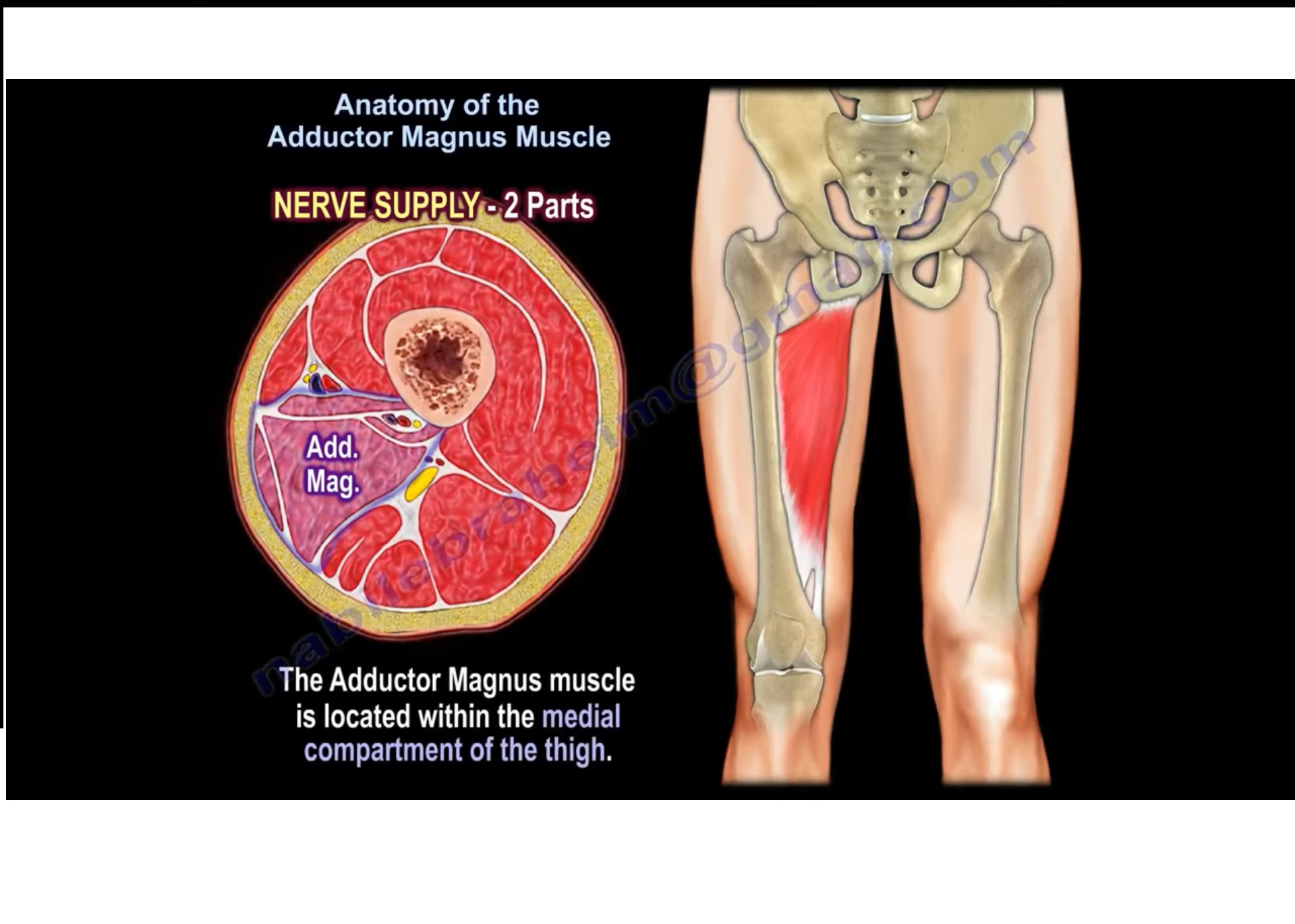Courtesy: Prof Nabil Ebraheim, University of Toledo, Ohio, USA
Anatomy of the adductor magnus muscle
- It is a thick triangular muscle.
Origin:
- Pubic part arises from the inferior pubic ramus.
- Ischial part arises from the ischial ramus and the inferiolateral part of the ischial tuberosity.
Insertion:
- Pubic part inserts into the gluteal tuberosity and linea aspera ( ridge on posterior aspect of the femur) and the supra condylar ridge.
- Ischial part inserts into the adductor tubercle.
Nerve supply:
- Obturator nerve : pubic part is supplied by posterior division of obturator nerve
- Tibial part of sciatic nerve : hamstrings part of the ischial part is supplied by the tibial nerve.
Arterial supply:
- Obturator artery
- Deep femoral artery and its perforating branches
- Small muscular branches arising from femoral artery
Functions:
- pubic part is the true adductor of the thigh
- ischial part extends the hip
Test for obturator nerve – adductor muscle assessment
- While in sitting position the examiner has the patient squeeze the thighs with the resistance placed at the inside of the knees, a weak thigh adduction indicates obturator nerve injury.
Important surgical consideration:
- It is advised not to use a compression hip screw in the intertrochanteric reverse oblique fracture of the hip. Medial displacement of the distal fragment may occur due to pull of the adductor muscles. Strong pull and displacement of the distal femur fracture fragment by the adductor muscle occurs in subtrochanteric fractures.
- Adductor myodesis is a critical transfemoral amputation. If it is not performed, the abductors and hip flexors can cause the femur to abduct leading to severe problem with gait. It improves the clinical outcome. Provides soft tissue envelope that help in prosthetic fitting. It improves position of the femur and Allows more efficient ambulation.
- Adductor magnus muscle is 4 times larger than the longus and brevis.
- Above knee amputation could result in 70% loss of the adduction moment.

Leave a Reply